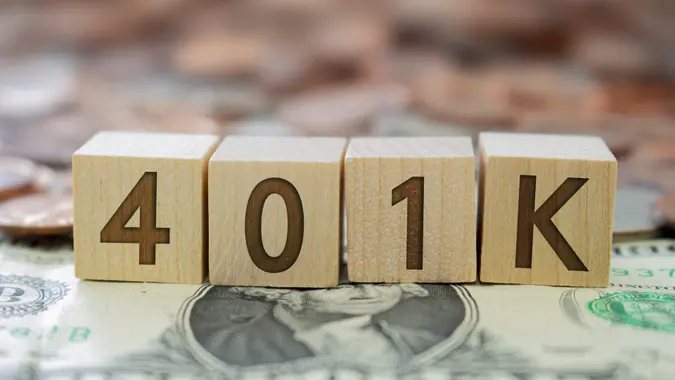52% of Millennials Say Debt Is Blocking Their Retirement Savings Goals — 4 Ways To Break Free

Commitment to Our Readers
GOBankingRates' editorial team is committed to bringing you unbiased reviews and information. We use data-driven methodologies to evaluate financial products and services - our reviews and ratings are not influenced by advertisers. You can read more about our editorial guidelines and our products and services review methodology.

20 Years
Helping You Live Richer

Reviewed
by Experts

Trusted by
Millions of Readers
If you’re a Millennial, you’re used to getting blamed for a lot. Armed with a passion for avocado toast and a hyper-reliance on social media, Millennials have supposedly decimated everything from the financial sector to pop culture. Yet Millennials have also come of age in unprecedented times, entering the job market at a time when it felt like setting foot in a gladiatorial arena and reaching peak earning periods during a global pandemic.
That feels like a lot, because it is a lot. Yet Millennials still keep pushing on financially, striving to save more for their forthcoming (well, in a few decades) retirements. However, a CNBC survey suggests that more than half of Millennials — 52% — feel behind in their retirement savings due to a single culprit: debt.
Between student loan debt and other forms of debt, Millennials are being squeezed out of their retirement savings. The situation may seem dire. Fortunately, there are a few simple solutions to help break free from debt and breathe a little easier when it comes to saving.
1. Get Real About Your Spending
Sometimes, after a hard day, all you want to do is crash on the couch with some DoorDash and a mindless show. And nobody is saying you should have to give that up completely.
However, if you find that you’re relying on deliveries for dinner more often than not — especially with a full load of groceries in the fridge — consider cutting down on ordering out. Or, if you know it’s going to be one of those weeks, skip the grocery trip and devote your budget to the DoorDash.
While you’re at it, take an honest inventory of all your spending over the past few months. Is your TV cluttered with apps you don’t watch? Cut ’em. Do you have a penchant for brand-name products? Start buying generic wherever you can. Are you mesmerized by the shiny and new? Explore dollar and thrift stores, and learn to find quality items used.
2. Exit the Debt Cycle
The debt cycle is exactly what it sounds like: You frequently borrow just a bit more than you can repay, buying more goods and services than is advisable (even if it’s sometimes necessary), and before you know it, your debt has exceeded what you can afford to pay down. Lather, rinse, repeat across credit cards and loans.
To get out of the debt cycle, aim to use cash or debit from your checking account instead of financing or relying on credit. It might take longer to get what you need, but you won’t be accumulating additional debt. Some experts suggest setting aside even a small “debt-free” fund each month to replace purchases you might typically finance.
3. Snowball Your Debt
If your debt feels too big to manage, you may feel buried under an avalanche of seemingly impossible obligations. Take a deep breath. You can dig yourself out of this avalanche — one snowball at a time. The snowball method can help reduce that overwhelming feeling, allowing you to pay off debt over time.
Sit down with your favorite soothing beverage and organize your debts from smallest to largest (temporarily ignoring interest rates). Make minimum payments on every debt except the smallest one, which you’ll tackle with all the money you can until it’s paid in full. Once that debt is gone, take the money you would have used to pay it and apply it to the next smallest debt — and so on until you’re debt-free.
Eventually, this process will have a “snowball effect” — get it? — clearing one debt after another, each one progressively larger until you no longer carry debt. Then, you can take all the money you used for debt payments and put it toward retirement.
4. Fund Your Emergency Savings
Your retirement savings and your emergency savings should be two separate accounts — and never the twain shall meet. To avoid dipping into retirement savings for sudden expenses, such as an inopportune car repair (though, really, when is it ever a good time for a car repair?) or a surprise health issue, you need a dedicated emergency fund.
But don’t stash your emergency fund just anywhere. A high-yield savings account is a better option than a regular savings account, since it can offer growth on your cash while maintaining accessibility.
While it’s daunting that 52% of Millennials feel too mired in debt to effectively save for retirement, it doesn’t have to be the end of your hopes for brighter golden years. Scrutinize your spending habits, pay down your debt and prioritize emergency savings. Before you know it, you’ll be out of the debt cycle and on the road to a secure retirement.
 Written by
Written by  Edited by
Edited by 

























